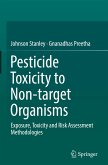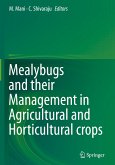The book addresses this critical need by providing a straightforward and easy to read primer to key elements of at-risk butterfly conservation programs including captive husbandry, organism reintroduction, habitat restoration, population monitoring, recovery planning and cooperative programs.
Impacts from habitat loss and fragmentation, invasive species, and climate change continue to accelerate the rate of imperilment and necessitate increased conservation action.
Zoos, natural history museums, botanical gardens and wildlife agencies are progressively focusing on insects, particularly charismatic groups such as butterflies and native pollinators, to help advance local conservation efforts and foster increased community interest and engagement.
Today, many institutions and their partners have successfully initiated at-risk butterfly conservation programs, and numerous others are exploring ways to become involved. However, insufficient experience and familiarity with insects is a critical constraint preventing staff and institutions from adequately planning, implementing and evaluating organism-targeted activities.
The information provided is intended to improve staff practices, learn from existing programs, promote broader information exchange, and strengthen institutional ability to develop new or improve existing butterfly conservation initiatives.
The information provided is intended to improve staff practices, learn from existing programs, promote broader information exchange, and strengthen institutional ability to develop new or improve existing butterfly conservation initiatives.
This book will be useful to professionals from zoos, natural history museums, botanical gardens, wildlife agencies, conservation organizations, land managers, students, and scientist in conservation biology, ecology, entomology, biology, and zoology.
Impacts from habitat loss and fragmentation, invasive species, and climate change continue to accelerate the rate of imperilment and necessitate increased conservation action.
Zoos, natural history museums, botanical gardens and wildlife agencies are progressively focusing on insects, particularly charismatic groups such as butterflies and native pollinators, to help advance local conservation efforts and foster increased community interest and engagement.
Today, many institutions and their partners have successfully initiated at-risk butterfly conservation programs, and numerous others are exploring ways to become involved. However, insufficient experience and familiarity with insects is a critical constraint preventing staff and institutions from adequately planning, implementing and evaluating organism-targeted activities.
The information provided is intended to improve staff practices, learn from existing programs, promote broader information exchange, and strengthen institutional ability to develop new or improve existing butterfly conservation initiatives.
The information provided is intended to improve staff practices, learn from existing programs, promote broader information exchange, and strengthen institutional ability to develop new or improve existing butterfly conservation initiatives.
This book will be useful to professionals from zoos, natural history museums, botanical gardens, wildlife agencies, conservation organizations, land managers, students, and scientist in conservation biology, ecology, entomology, biology, and zoology.
"The contributions in this edited volume constitute a highly practical guide to obtaining critical information about imperiled butterflies and strategies for implementing their conservation. ... each chapter is focused on a particular aspect of butterfly conservation, or is a case study of the conservation of particular species or a species in a specific geographic region. ... This book is a must for anyone contemplating direct engagement with butterfly conservation activities." (Chris Nice, The Quarterly Review of Biology, Vol. 91 (3), September, 2016)
"The book accomplished the goal of providing a framework for butterfly conservation and management efforts. ... useful for groups interested in identifying ways to best participate in these efforts. For readers not familiar with specific issues associated with imperiled butterflies, the focus on practical applications and numerous case studies provide an excellent starting point for developing relevant programs. Overall, the diverseexpertise and experiences of the authors provide an important resource for practitioners interested in butterfly conservation and management." (Kristen A. Baum, The Journal of Wildlife Management, Vol. 80 (5), July, 2016)
"Each chapter is referenced independently and also includes a summary of key points discussed. ... book fulfills its promise of delivering practical advice to advance butterfly conservation. It is informative and also refreshingly free from excessive 'jargon' ... . I hope that it will indeed be read widely and its content heeded in planning further conservation efforts for butterflies across North America." (Tim R. New, Journal of Insect Conservation, Vol. 19, 2015)
"The book accomplished the goal of providing a framework for butterfly conservation and management efforts. ... useful for groups interested in identifying ways to best participate in these efforts. For readers not familiar with specific issues associated with imperiled butterflies, the focus on practical applications and numerous case studies provide an excellent starting point for developing relevant programs. Overall, the diverseexpertise and experiences of the authors provide an important resource for practitioners interested in butterfly conservation and management." (Kristen A. Baum, The Journal of Wildlife Management, Vol. 80 (5), July, 2016)
"Each chapter is referenced independently and also includes a summary of key points discussed. ... book fulfills its promise of delivering practical advice to advance butterfly conservation. It is informative and also refreshingly free from excessive 'jargon' ... . I hope that it will indeed be read widely and its content heeded in planning further conservation efforts for butterflies across North America." (Tim R. New, Journal of Insect Conservation, Vol. 19, 2015)








